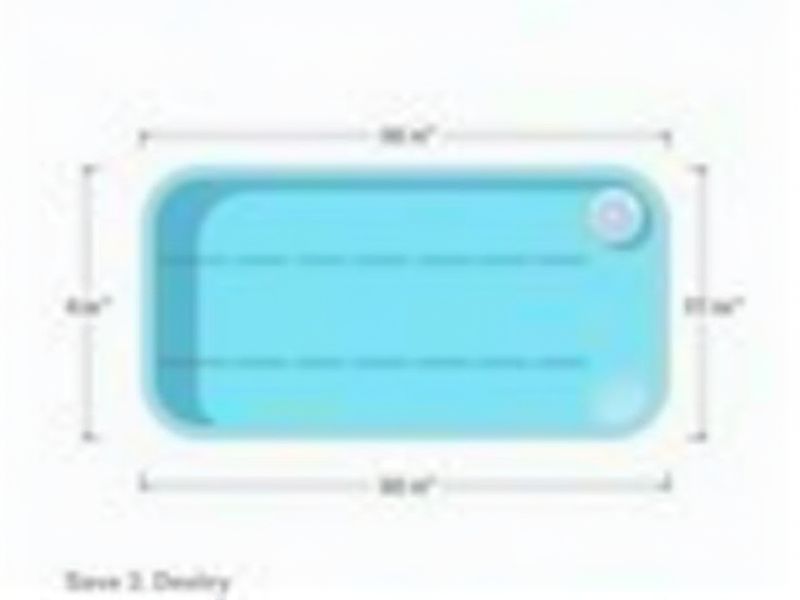
An Olympic-sized swimming pool is standardized to ensure fair competition and uniform training environments. It measures 50 meters (164 feet) in length and 25 meters (82 feet) in width, with a minimum depth of 2 meters (6.6 feet). The pool typically contains 10 lanes, each 2.5 meters (8.2 feet) wide, which helps prevent waves caused by swimmers from interfering with neighboring lanes. When designing or utilizing an Olympic pool, these precise dimensions allow for official swim meets, accurate training, and consistent record-keeping.
Length: 50 Meters
An Olympic-sized swimming pool measures 50 meters in length, providing ample space for competitive swimming events. This standardized length is essential for international competitions, ensuring consistency in training and performance evaluation. The width of the pool typically spans 25 meters, featuring a minimum depth of 2 meters to accommodate various swimming styles and techniques. With 10 lanes available, each 2.5 meters wide, swimmers can compete side-by-side, promoting fairness and optimal race conditions.
Width: 25 Meters
An Olympic-sized swimming pool must adhere to strict international standards, measuring precisely 25 meters in width. The length of the pool is 50 meters, creating a total area of 1,250 square meters. Depth varies, typically ranging from 2 meters to 3 meters, ensuring that the environment is suitable for competitive swimming. Your experience in such a pool can greatly enhance performance, as it provides ample space for stroke technique and speed.
Depth: 2 Meters (Minimum)
An Olympic-sized swimming pool measures 50 meters in length and 25 meters in width, with a minimum depth of 2 meters. This depth standard ensures sufficient water for competitive swimming, safeguarding athletes during dives and strokes. The 2-meter depth also minimizes wave turbulence, allowing for optimal performance conditions during events. When preparing for competitions, understanding these dimensions can enhance your training strategies and focus on execution.
Number Of Lanes: 10
An Olympic-sized swimming pool spans 50 meters in length and 25 meters in width, featuring a total of 10 lanes. Each lane measures 2.5 meters wide, allowing for competitive swimming, training, and major events. The pool depth typically ranges from 2 to 3 meters, providing optimal conditions for elite athletes. Such specifications ensure compliance with the standards set by the International Swimming Federation (FINA) for international competitions.
Lane Width: 2.5 Meters
An Olympic-sized swimming pool measures 50 meters in length and 25 meters in width, adhering to strict international standards. Each lane has a width of 2.5 meters, allowing ample space for swimmers to compete without interference. The pool also features a minimum depth of 2 meters, which is essential for the safety and performance of athletes during events. These specifications ensure optimal conditions for both competitive swimming and training, fostering excellence in the sport.
Pool Volume: Approximately 2,500,000 Liters
An Olympic-sized swimming pool adheres to precise dimensions, measuring 50 meters in length, 25 meters in width, and a minimum depth of 2 meters. This design results in a total pool volume of approximately 2,500,000 liters, which is essential for hosting international competitions. Pools designed to this standard often include features such as lane markers, starting blocks, and underwater timing systems, ensuring optimal performance for athletes. Maintaining the water quality in such a vast volume requires advanced filtration systems and regular chemical balance checks to meet health and safety regulations.
Starting Block Height: 0.5 To 0.75 Meters Above Water
The starting block height in an Olympic-sized swimming pool is critical for competitive performance, typically ranging from 0.5 to 0.75 meters above the water's surface. This height allows swimmers to maximize their explosive starts, directly influencing their race times. An Olympic pool measures 50 meters in length and 25 meters in width, adhering to International Swimming Federation (FINA) regulations. Proper starting block height not only contributes to fair competition but also ensures safety and efficiency during races.
Temperature: 25-28 Degrees Celsius
An Olympic-sized swimming pool measures 50 meters in length and 25 meters in width, with a minimum depth of 2 meters. The optimal water temperature for competitive swimming is maintained between 25-28 degrees Celsius, allowing athletes to perform at their best without experiencing fatigue. Visibility and clarity are also crucial, ensuring a minimum light level of 200 lux for safety and performance. Keeping these standards helps create a balanced environment for swimmers to achieve their peak performance during events.
Tiling: Anti-Slip Ceramic Or Similar Material
An Olympic-sized swimming pool measures 50 meters in length and 25 meters in width, encompassing a total area of 1,250 square meters. To ensure safety, the tiling for the pool must utilize anti-slip ceramic or similar materials, providing excellent grip even when wet. This type of tiling not only enhances safety for swimmers but also adds to the aesthetic appeal of the facility, with various designs and colors available. Regular maintenance of the tiling is crucial, requiring biannual checks to prevent deterioration and ensure a safe swimming environment.
Markings: Black Lines For Lane Direction On Pool Floor.
An Olympic-sized swimming pool spans 50 meters in length and 25 meters in width, featuring a depth of at least 2 meters for competitive events. The pool floor includes prominent black markings, indicating lane divisions with 10 lanes typically available for use, facilitating clear direction for swimmers. These lane lines are crucial for maintaining order during races, as they guide athletes through their designated paths. Your experience in the water can significantly benefit from understanding these standards, ensuring compliance with international regulations set by the International Swimming Federation (FINA).
